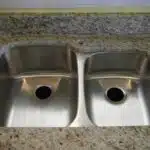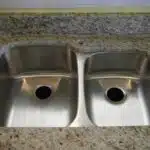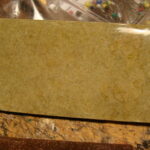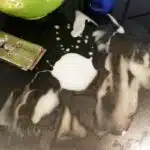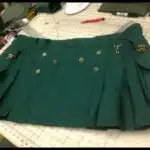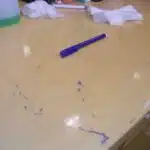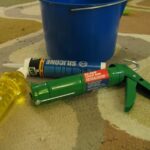As a plastic restoration technician, I have seen countless cases of scratched plastic surfaces. These scratches can be a real eyesore and can detract from the overall appearance of an item. Fortunately, there are several methods that you can use to remove scratches from plastic surfaces. In this article, I will share some of the most effective techniques that you can use to restore the look of your plastic items and make them look like new again.
Scratches on plastic surfaces can occur for many reasons. They may result from regular wear and tear or accidental damage. Regardless of how they arrived, these scratches can be unsightly and frustrating to deal with. While some people may choose to replace the entire item, this is not always necessary or practical. By using the right techniques and tools, it is possible to remove scratches from plastic surfaces and restore them to their original condition. In the following paragraphs, we will explore some of the best ways to achieve this goal so that you can enjoy a restored item without having to purchase a brand new one.
Understanding The Nature Of Plastic Scratches
Plastic is a popular material used in various applications, from household items to industrial products. Understanding plastic composition is crucial in addressing the issue of scratches. Plastic is composed of long chains of molecules called polymers. These polymers have different properties that determine the durability and strength of plastic.
Plastic scratches occur due to various causes such as physical impact, exposure to harsh chemicals or UV rays, and poor maintenance. Physical impact can cause deep scratches on the surface while exposure to harsh chemicals can weaken the plastic and make it prone to scratches. Poor maintenance practices like using abrasive materials during cleaning can also cause scratches.
As a plastic restoration technician, it is essential to understand the nature of plastic scratches to address them effectively. This involves identifying the type of plastic, its composition, and the cause of the scratch. Proper identification helps in determining which restoration method works best for a particular type of plastic and its level of damage.
Understanding the nature of plastic scratches is crucial in restoring its original appearance and functionality. It helps in identifying which restoration method works best for each type of plastic and level of damage caused by different factors. In the next section, we will discuss how to assess the severity of damage caused by scratches on plastic surfaces.
Assessing The Severity Of The Damage
Understanding the Nature of Plastic Scratches is crucial in determining the best approach to remove them. Plastic materials differ in composition, texture, and durability. Some plastics are prone to scratches than others, and it is important to identify the type of plastic before attempting any repair. Scratches can be caused by a variety of factors such as rubbing, scraping or impact damage. The depth and width of the scratch will determine the level of repair that is required.
Assessing damage severity involves examining the extent of the scratch on the plastic surface. Shallow scratches can be easily removed with simple polishing techniques while deep scratches require more advanced methods such as sanding and buffing. It is important to determine whether the scratch has penetrated through the clear coat layer or into deeper layers that might affect its structural integrity. Identifying plastic types can also help in selecting appropriate materials for restoration purposes.
When assessing damage severity and identifying plastic types, it is important to gather necessary materials before starting any repair work. Materials such as sandpaper, polishes, solvents, cloth or microfiber towels should be readily available depending on the level of damage caused by scratches. A heat gun may also come in handy when dealing with deeper scratches that require melting back into place after sanding down their edges. With these tools ready at hand, you can confidently undertake a successful restoration process that will leave your plastic surface looking brand new again.
Transition: Now that we have understood how to assess damage severity and identify plastic types, let’s focus on gathering necessary materials for restoring scratched surfaces effectively without causing further damage.
Gathering The Necessary Materials
In order to properly remove scratches from plastic, the restoration technician must first determine the type of plastic they are dealing with.
Once the plastic type is identified, the technician can then gather the appropriate materials, such as polishes, waxes, and solvents.
It is important to research and find the right products to use on the specific plastic in order to achieve the best results.
Many companies specialize in plastic restoration products, offering cleaners, polishes, and sealants that can be used to repair and restore plastic surfaces.
Types Of Materials Needed
To properly remove scratches from plastic, one must first gather the necessary materials. The materials selection is crucial in ensuring that the job is done right and in a cost-effective manner. As a plastic restoration technician, I have found that there are several types of materials that are needed to successfully remove scratches from plastic.
The first and most important material needed is a quality plastic cleaner. This will prepare the surface for any further work that needs to be done by removing dirt and grime from the plastic’s surface. Additionally, a microfiber cloth should be used with the cleaner to ensure that no additional scratches are added during the cleaning process. Another important material to use is a sandpaper or buffing compound. These will help remove deeper scratches and imperfections on the surface of the plastic.
Lastly, it is essential to have access to polishing compounds and finishing products. These will give your newly restored plastic surface a smooth finish and shine that rivals its original state. When selecting these products, it’s important to consider cost comparison as some products can be quite expensive but may not necessarily provide better results than more affordable options.
In conclusion, when gathering materials for removing scratches from plastic, using quality products is essential. Plastic cleaners, sandpapers or buffing compounds, polishing compounds and finishing products all play an important role in restoring damaged surfaces back to their original condition. By considering cost comparisons when selecting these supplies, you can achieve exceptional results while keeping expenses low.
Finding The Right Products
As a plastic restoration technician, choosing the right tools is crucial in ensuring that scratches are properly removed from plastic surfaces. Finding the right products can be overwhelming, but following certain tips for safe application can make the process easier and more efficient. When selecting products, always consider their effectiveness, safety, and cost.
To find the right products for removing scratches from plastic, first assess the extent of damage on the surface. Light scratches can be removed using milder cleaning agents such as vinegar or baking soda mixed with water. Deeper scratches require stronger cleaning solutions like rubbing alcohol or acetone. Always read product labels carefully before use to ensure they are safe for your specific type of plastic surface.
When selecting products for polishing and finishing scratched plastic surfaces, it’s important to choose those that provide optimal results while also being cost-effective. Avoid using abrasive compounds or polishes that may further damage or scratch the surface. Instead, use mild polishes and finishing products that leave a smooth and shiny finish on your newly restored plastic surface. By taking these tips into consideration when finding the right products for scratch removal on plastic surfaces, you can achieve exceptional results without breaking the bank.
Cleaning The Plastic Surface
To effectively clean plastic surfaces, it is important to use the right cleaning products and techniques. Prevention tips are crucial in maintaining a scratch-free surface. Avoid using abrasive materials such as steel wool or rough sponges during cleaning. Instead, opt for soft cloths, microfiber towels or non-abrasive sponges.
Commercial cleaners can also be used to clean plastic surfaces. However, it is important to read the labels of these products before using them. Some commercial cleaners contain abrasive chemicals that can damage the plastic surface rather than restore it. Choose cleaners that are specifically designed for plastic restoration and always follow the instructions provided.
In addition to regular cleaning, prevention tips can help keep your plastic surfaces looking new for longer periods of time. Always be cautious when handling items made of plastic and avoid placing heavy or sharp objects on them. With proper care and maintenance, you can enjoy a scratch-free surface for years to come.
When dealing with scratches on your plastic surface, there are various methods you can try before seeking professional help. One cost-effective method is using toothpaste to remove scratches. This technique involves applying toothpaste on the affected area and gently rubbing it with a soft cloth until the scratch disappears. However, it is important to note that this method may not work on deep scratches or those located in areas where excessive pressure cannot be applied effectively.
Using Toothpaste To Remove Scratches
After cleaning the plastic surface, the next concern is how to remove scratches from it. Toothpaste has been a common solution for minor scratches, but there are other toothpaste alternatives that can also work effectively. For instance, baking soda and water can be mixed to form a paste that can be applied on the scratched area using a microfiber cloth. The mixture acts as an abrasive agent, removing the scratches without leaving any residue.
Toothpaste alternatives should be used with care as some may contain harsh chemicals that can further damage the plastic surface. It is important to test any new product on a small, inconspicuous area before applying it to the entire surface. This will help in gauging its effectiveness and avoid causing more damage than good.
Preventing future scratches is crucial in maintaining a scratch-free plastic surface. One way of doing this is by using protective coatings or films. These products act as a barrier between the plastic and external factors such as UV rays, dust, and scratches. Additionally, avoiding contact with sharp objects or abrasive materials such as sandpaper can go a long way in preventing future scratches.
Moving on from toothpaste alternatives, applying baking soda and water is another effective way of removing scratches from plastic surfaces. However, caution should still be taken when using this method to avoid damaging the plastic further. It is always best to consult with a professional restoration technician for advice on how best to restore your scratched plastic surface.
Applying Baking Soda And Water
Applying baking soda and water is a popular method for removing scratches from plastic. To begin, mix equal parts of baking soda and water to create a paste. Apply the paste to the scratched area using a soft cloth or sponge, rubbing in a circular motion for about 30 seconds. Rinse the area with warm water and dry thoroughly with a clean towel.
While baking soda is an effective scratch remover for plastic, there are also alternative methods that you can consider. Toothpaste, for example, can be used as a substitute for baking soda. Simply apply toothpaste to the scratched area and rub gently with a soft cloth or sponge. Afterward, rinse the area with warm water and dry it completely.
It’s important to take precautions when using any cleaning solution on plastic surfaces. Always test the solution on an inconspicuous area before applying it to the scratched surface to ensure that there is no adverse reaction. Additionally, avoid using abrasive cleaning tools such as steel wool or scrub brushes as these can cause further damage to the plastic surface.
Moving on from applying baking soda and water, utilizing a plastic scratch repair kit is another option you can consider. These kits typically include sandpaper, polishing compounds, and other materials needed to effectively remove scratches from plastic surfaces. Let’s explore this method further in the next section.
Utilizing A Plastic Scratch Repair Kit
A plastic scratch repair kit is an effective solution to restore the appearance of scratched plastic surfaces. It is a convenient and affordable way to fix scratches on various materials such as car interior components, phone screens, and household appliances. The kit typically includes a solution that fills in the scratches and leaves behind a smooth surface. Choosing the right kit is crucial in achieving optimal results.
Common mistakes to avoid when using a plastic scratch repair kit include applying too much pressure when rubbing the solution into the surface, not cleaning the area thoroughly before applying the solution, and not allowing enough time for the solution to dry completely. To ensure success with your plastic restoration project, follow these tips:
- Read the instructions carefully before beginning.
- Test the solution on an inconspicuous area first.
- Use a microfiber cloth to apply and buff out the solution.
As a plastic restoration technician, I have seen many people attempt to repair their own plastic surfaces only to end up making it worse or causing further damage. It is important to understand that not all kits are created equal and may not be suitable for certain types of plastics. By taking the time to research and choose the right kit for your specific needs, you can save yourself time and money in the long run.
Before moving onto sanding with fine grit sandpaper, it is essential that you properly prepare your surface with a plastic scratch repair kit. By following these tips and avoiding common mistakes, you can achieve professional-looking results at home without having to spend money on expensive repairs or replacement parts. Remember that patience is key when restoring scratched plastic surfaces – take your time, follow instructions carefully, and enjoy seeing your surfaces restored to their former glory!
Sanding The Surface With Fine Grit Sandpaper
After cleaning the plastic surface, it’s time to sand it with fine grit sandpaper. This technique is effective for removing scratches that are too deep to be polished out. Sanding removes a thin layer of the plastic, making the surface smoother and less noticeable from any angle.
To start, use sandpaper with a grit of 320 or 400. Wrap it around a sanding block and apply light pressure on the scratched area. Move the sandpaper in circular motions until you can no longer see the scratch. Then switch to a finer grit of 600 or 800 and repeat the process until you achieve an even finish. Make sure not to oversand as this can cause permanent damage.
After sanding, you can polish the surface using a buffing wheel attachment on an electric drill. Apply a polishing compound onto the wheel and move it across the sanded area in circular motions at low speed. Keep checking your progress until you achieve a smooth finish that matches the surrounding plastic surface. Finally, clean off any residue from the polishing compound before proceeding to polish with a microfiber cloth in the subsequent section about ‘polishing with a microfiber cloth’.
Polishing With A Microfiber Cloth
Before beginning the polishing process, it is recommended to inspect the microfiber cloth for any dirt or debris that may be present.
It is important to wear gloves when handling the cloth to protect from any bacteria or oils that may transfer from the skin.
The polishing process should be done in a circular motion to ensure the scratches are evenly buffed out.
After the polishing is complete, the plastic should be inspected to ensure the desired results have been achieved.
Preparing The Cloth
When it comes to removing scratches from plastic, polishing with a microfiber cloth is an effective method. However, the success of this technique largely depends on how you prepare the cloth. Choosing an appropriate cloth is crucial to ensure that you don’t end up causing further damage to the surface.
One common mistake people make is using a regular cotton cloth for polishing, which can leave lint or fibers on the plastic surface. Instead, opt for a high-quality microfiber cloth that is specifically designed for cleaning and polishing plastics. These cloths are made of synthetic materials and have tiny fibers that trap dirt and particles without scratching the surface.
Another important factor to consider when preparing your cloth is ensuring its cleanliness. Any dirt or debris on the cloth can cause scratches, so always wash it thoroughly before use. Avoid using fabric softeners or bleach as they can damage the microfiber’s fibers and reduce its effectiveness. By choosing an appropriate microfiber cloth and avoiding common mistakes, you can achieve excellent results when polishing plastic surfaces.
Polishing The Plastic
As a plastic restoration technician, I have seen countless types of plastic surfaces that have become scratched over time. These scratches not only detract from the appearance of the plastic but also weaken its structural integrity. Polishing the plastic is an essential step to restore its shine and improve its durability.
Polishing with a microfiber cloth is an effective method for removing scratches from plastic surfaces. However, before polishing, it is crucial to identify the type of plastic you are working with. Different types of plastics require different polishing techniques and products. For instance, soft plastics like vinyl or polycarbonate are more sensitive to abrasive materials than hard plastics like acrylic or polyethylene terephthalate (PET). Therefore, it is essential to use appropriate polishing compounds and tools that match the type of plastic you’re restoring.
Common causes of scratches on plastic surfaces include exposure to UV light, contact with sharp objects, and improper cleaning methods. When polishing with a microfiber cloth, it’s crucial to avoid using harsh chemicals or abrasive materials that can cause further damage to the surface. Instead, choose a high-quality compound that matches the type of plastic you’re restoring and follow the manufacturer’s instructions carefully. With proper preparation and techniques, you can achieve excellent results when polishing with a microfiber cloth and restore your plastic surfaces’ shine and durability.
Using A Heat Gun Or Hairdryer
When it comes to removing scratches from plastic, using a heat gun or hairdryer is one of the options that you can consider. However, it is important to handle these tools with care and follow certain safety measures to avoid any accidents. Before proceeding with the process, ensure that your work area is free from any flammable materials and keep the heat gun away from water sources.
When using a heat gun, make sure that you set it at the lowest temperature possible. The ideal temperature range for removing scratches from plastic is between 250-300 degrees Fahrenheit. This temperature range helps soften the plastic surface so that scratches can be easily removed with a microfiber cloth. Additionally, when handling a heat gun, always wear gloves and goggles to protect yourself from burns and flying debris.
Similarly, when using a hairdryer, make sure that you set it at low or medium temperature mode. High temperatures can melt or warp the plastic surface, causing more damage than good. Use a microfiber cloth to apply gentle pressure on the scratched area while holding the hairdryer close enough to soften the surface but not too close that it causes damage.
To further enhance the appearance of your plastic item after removing scratches using a heat gun or hairdryer method, applying a plastic polish is recommended. This will help restore its shine and provide additional protection against future scratches.
Applying A Plastic Polish
While using a heat gun or hairdryer method is one way to remove scratches from plastic, it may not always be the most effective. Some may argue that using a plastic polish could also lead to potential damage, but with the right technique and product choice, it can effectively restore the surface of your plastic.
Choosing the right polish is crucial for achieving optimal results. Look for a polish specifically designed for use on plastics and avoid abrasive products that can further damage the surface. Consider the depth of the scratches and choose a polish with an appropriate level of abrasiveness. Some polishes may also contain UV inhibitors to prevent future fading or discoloration.
Tips for effective application include thoroughly cleaning the surface before applying any polish, as dirt and debris can cause further damage during buffing. Use a microfiber cloth or applicator pad to apply the polish in circular motions, working in small sections at a time. Allow the polish to dry completely before buffing with a clean cloth to reveal a smooth and polished finish.
To avoid common mistakes when applying plastic polish, remember to not over-apply the product as this can lead to streaks and unevenness. Also, avoid pressing too hard when buffing as it can cause additional scratches or damage to the surface. With these tips in mind, using a plastic polish can be an effective solution for removing scratches from plastic surfaces.
Avoiding Common Mistakes
Preventing damage is always better than trying to fix it later. One of the most important aspects of plastic restoration is proper handling. Avoiding common mistakes can help extend the life and appearance of your plastic items.
When handling plastic items, it’s crucial to avoid contact with abrasive materials or surfaces. Scratching, denting, and other forms of damage can occur easily if you’re not careful. Even placing a heavy object on top of a plastic item can cause permanent deformation. Therefore, it’s best to handle your plastic items with care and avoid unnecessary stress on them.
Another mistake that people make when dealing with plastic items is using harsh cleaning agents or solvents. These chemicals can break down the surface of the plastic, causing discoloration or even melting in some cases. It’s essential to use only mild soaps and detergents when cleaning plastic items. If you’re unsure which product to use, consult with a professional technician who specializes in plastic restoration.
Table: Common Mistakes in Plastic Restoration
| Mistake | Consequence | Prevention |
|---|---|---|
| Using abrasive materials on plastic | Scratches, dents | Handle with care; avoid contact with abrasive surfaces |
| Using harsh cleaning agents | Discoloration, melting | Use mild soaps and detergents; consult with a professional |
Proper handling and avoiding common mistakes are vital for maintaining the appearance of your plastic items. By following these tips, you can help ensure that your plastics stay looking new for years to come. In the next section, we will discuss how to maintain your plastics’ appearance through regular upkeep and preventative measures without damaging them further.
Maintaining The Appearance Of Your Plastic Items
As a plastic restoration technician, it is crucial to inform clients about the best practices for maintaining the appearance of their plastic items. One way to prevent scratches is by avoiding placing abrasive objects on top of these items. For example, placing a metal object on top of a plastic surface can cause permanent damage. Therefore, it is essential to use coasters or protective mats to prevent scratches.
DIY cleaning methods are also vital in maintaining the appearance of plastic items. Using harsh chemicals or rough towels can cause scratches and further damage. Instead, opt for mild soap and warm water with a soft microfiber cloth to clean your plastic items. Avoid using products that contain bleach or ammonia as they can cause discoloration and weaken the integrity of your plastic item.
While DIY methods are effective in removing minor scratches from plastic surfaces, some damages require professional help. If you have deep scratches that cannot be fixed with DIY methods, it may be time to seek professional help. Professional technicians have access to specialized tools and techniques that can restore your plastic item’s appearance effectively. It is always better to seek professional help before causing further damage to your valuable items.
When To Seek Professional Help
Deep scratches in plastic can require professional help due to the complexity of the repair. Warped plastic can be difficult to repair and restore without professional help. Paint damage can be difficult to remove without the use of professional grade products. Repair kits may be available for DIY methods, but professional help may be needed to finish the job. Sanding techniques and polishing tools are needed to restore clarity and color correction. Professional help can be expensive, but time investment can be saved in the long run.
Deep Scratches
Deep scratches in plastic can be a real eyesore. They not only affect the appearance of the object but also decrease its value. If you have tried preventative measures and DIY alternatives, but the scratches remain, it may be time to seek professional help. As a plastic restoration technician, I have seen many deep scratches that cannot be fixed with home remedies or commercial products.
At times, deep scratches require specialized tools and techniques that only professionals possess. Trying to fix these scratches yourself can lead to further damage, resulting in more expenses down the road. In addition, if the object is rare or valuable, attempting to restore it on your own could reduce its worth even further. When deciding whether or not to seek professional help for deep scratches in plastic, consider the importance of the item and how much it means to you.
It is always best to consult with a professional when dealing with deep scratches in plastic. They have access to advanced equipment and techniques that produce optimal results. Moreover, they can offer advice on how to prevent future scratches from occurring. Overall, seeking professional help for deep scratches is worth considering when preventative measures and DIY alternatives fail to deliver satisfactory results.
Warped Plastic
As a plastic restoration technician, I have encountered numerous cases of warped plastic. Warping occurs when the plastic material undergoes excessive heat exposure, resulting in deformation or distortion of its original shape. This can happen during manufacturing or due to external factors such as exposure to sunlight or high temperatures.
Warped plastic can be a frustrating problem for anyone who values the appearance and function of their plastic items. DIY alternatives may offer temporary solutions such as reshaping the item or using hot water to soften the material. However, these quick fixes are not long-term solutions and may even cause further damage to the item.
When dealing with warped plastic, it is best to seek professional help from a plastic restoration technician. These professionals possess specialized tools and techniques that can restore the item’s original shape without causing any further damage. Additionally, they can offer advice on preventing warping in the future by using heat-resistant materials or avoiding excessive heat exposure altogether.
In conclusion, warped plastic is a problem that requires professional attention. Attempting to fix it yourself may lead to more damage and expenses down the road. By seeking professional help, you can ensure that your plastic items are restored properly and prevent future warping from occurring.
Paint Damage
As a plastic restoration technician, I have come across various cases of paint damage on plastic items. Paint damage can occur due to external factors such as exposure to UV rays, harsh chemicals or accidental scratches. When not addressed promptly, it can lead to further damage such as chipping and peeling, making the item look unsightly.
DIY fixes such as using nail polish or touch-up paint are often tempting but do not offer long-term solutions. In fact, these quick fixes may cause more harm than good by introducing uneven layers of paint or mismatched colors. This is where the importance of seeking professional help comes in. A plastic restoration technician has specialized tools and techniques that can effectively restore the original appearance of your plastic item while ensuring that the paint job matches perfectly.
Furthermore, a professional technician can also offer advice on preventing future paint damage from occurring. This includes using protective coatings or avoiding exposure to harmful substances that may cause discoloration or fading over time. By taking preventive measures and seeking professional help when needed, you can prolong the lifespan of your plastic items and keep them looking their best for years to come.
Conclusion: Achieving A Like-New Appearance
Achieving a Like-New Appearance
After following the previous steps to remove scratches from plastic, you may be left with a surface that is not quite perfect. Fortunately, there are additional measures that can be taken to achieve a like-new appearance.
One preventative measure is the use of protective coatings. These coatings can help to prevent future scratches and damage to the plastic surface. Additionally, regular cleaning and maintenance can help to keep the plastic looking its best.
If the scratches are particularly deep or widespread, alternative solutions may need to be considered. One option is to replace the damaged piece of plastic altogether. However, this can be costly and time-consuming. Another option is to cover the scratches with vinyl wraps or decals. While this may not completely hide the damage, it can provide a temporary fix until a more permanent solution is found.
- Applying a protective coating can create an extra layer of protection for your plastic surface.
- Regular cleaning and maintenance will help prolong the lifespan of your plastic item.
- Vinyl wraps or decals can act as a temporary fix for deep or widespread scratches.
As a plastic restoration technician, my goal is always to provide my clients with high-quality results that meet their needs and exceed their expectations. By following these steps and taking preventative measures, you can keep your plastic surfaces looking their best for years to come. Remember that there are alternative solutions available if needed, but taking care of your plastic items on a regular basis will help prevent damage in the first place.
Conclusion
As a plastic restoration technician, it is important to understand the nature of plastic scratches and how to effectively remove them. By assessing the severity of the damage and gathering the necessary materials, you can restore your plastic items to their like-new appearance.
One common mistake when attempting to remove scratches from plastic is using abrasive materials that can actually worsen the damage. Instead, opt for toothpaste as a gentle yet effective solution. It is also important to properly clean the plastic surface before applying any remedies.
Maintaining the appearance of your plastic items can be achieved through regular cleaning and avoiding harsh chemicals or rough materials. However, if the damage is too severe or if DIY methods are not successful, seeking professional help may be necessary.
In conclusion, restoring scratched plastic requires patience and attention to detail. Like a sculptor chiseling away imperfections to reveal a beautiful masterpiece, removing scratches from plastic requires careful precision and technique. By following these steps and avoiding common mistakes, you can achieve a like-new appearance for your plastic items.
Image Credits
- “Kite from scratch.” by patrick.henry0103 (featured)



